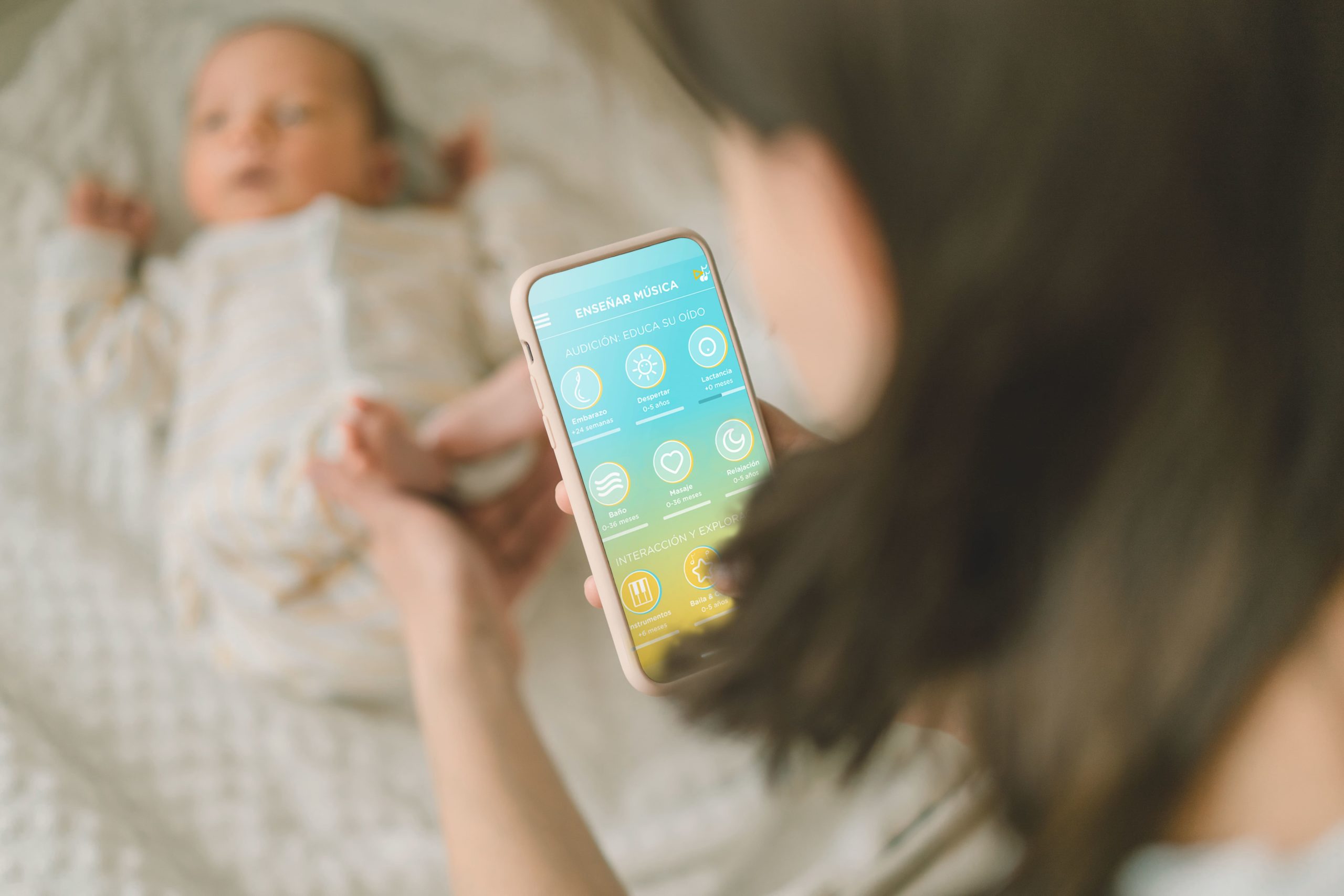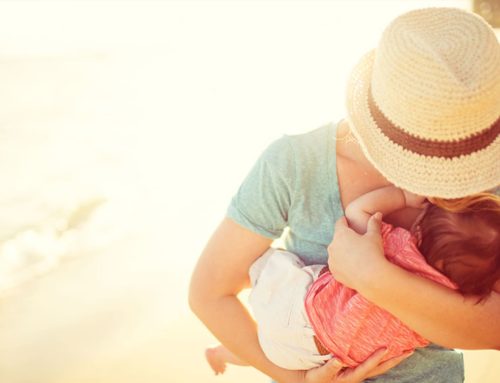Introduction: Unlocking your baby’s full potential by eliciting affective early brain musicalization from birth
The ETFES© Method is considered to be the first method of early brain musicalization for children at the age of zero. The philosophy behind this method is that children should start learning music as early as possible, and their brains should be trained to be able to understand and perceive it in a better way. The first stages of this method aim at training babies’ ears through exercises such as repeating musical exercises, sounds or words, which help them become more familiar with musical elements such as rhythm, melody or harmony.
The ETFES© Method is an auditory training and music education program for early brain musicalization that can accompany you throughout early childhood (0-6 years). You will educate, develop and train the musical ear of your “little” from home, while stimulating different areas of the brain linked to language, memory, emotions, or learning.
Turning daily routines into cognitive training: Nothing happens if you work on one section (relaxation, breastfeeding, bath, massage…) more than another or if one section you barely work it. The method is structured with this in mind. The objective will be to complete 6,000 minutes of audition exercises going through the different Levels, combining the sections that you like the most and that best suit your day to day.
3 reasons for early musicalization
There are three reasons for early musicalization:
- Stimulation of the brain
- Stimulation of the senses
- Stimulation of the body
The philosophy of ETFES© Method
As a parent, you know that the first three years of your child’s life are critical to their development. Your baby goes through many milestones in this time. If you want your child to be successful and happy after they enter school, it is important that you start musicalizing their brains as soon as possible.
ETFES© Method is the most effective way of doing this. It works by using affection to increase the level of brain chemicals known as endorphins while supporting a child’s learning process. By doing this, we can help them form an attachment with music that will last throughout life!
Home is the only place where you can maintain the consistency necessary for your baby to memorize (auditory internalization) the sound of the more than 2K musical language exercises. And you are going to do it through relaxation, well-being, contact and affection. The ETFES© Method makes you their first music teacher in life.
The first stages of the method
The first stage of the method is the stimulation of the baby’s language development through auditory internalization. You play a variety of kinds of adapted music theory and ear training exercises and melodies, including styles as piano music, film music, modern music, electronic music, classical music and nursery rhymes, on a specially designed app. This helps to develop your infant’s appreciation for melody, rhythm and harmony, while learning the language of music as well.
In the app you will find 2 types of work:
1- MUSICAL EAR EDUCATION. *Sections: Prenatal stimulation, Wake up, Breast and bottle feeding, Bath time, Massage & caresses, Calm & relaxation. Your baby will learn and memorize all kinds of musical concepts.
The objective in these sections is to stimulate and work on auditory memory while DEVELOPING HIS MUSICAL EAR. The internalization and memorization of the rhythmic and melodic patterns of the more than 2,000 exercises of Musical Language Adapted for regular hearing from relaxation and well-being.
You must complete sections until you have accumulated a minimum of 6,000 minutes of Session auditions of Exercises advancing through the different Levels and completing the repetitions and series indicated in the CURRICULUM of each section. Each session (each recording) comprises between 1 and 6 musical exercises of about 40 seconds duration, with 1 or 2 related compositions.
As you progress through the subsequent Levels within each section, the derived exercises and compositions will become more complex. Your little one will internalize and memorize the sound of ALL KINDS OF MUSICAL CONCEPTS.
2- INTERACTION AND EXPLORATION. *Sections: Play instruments, Dance & Sing and Mindfulness.
PLAY INSTRUMENTS: When the time comes, put a piano or percussion instrument in his hands for him to improvise and explore. Do it first in a quiet environment, and if possible, leave him alone so he feels comfortable. You can also do it while a musical base is playing from the section: Instruments. It will surprise you with intentional fragments already memorized thanks to the audition sessions. The more minutes and exercises you have listened to and memorized beforehand, the greater the results in this regard (a minimum of 1,000 minutes of listening completed is recommended). If this does not happen, you just have to continue working on the auditory part. Slowly but surely. Without forcing you or forcing him. Visit our website or Instagram profile to see videos of babies who have completed the method. Once you have freely improvised in a silent environment, press play on a musical base from the Instruments section. It will be about finding the limits to the music that sounds (limits in the rhythmic meter, and in the harmonic structure, that is: what notes will work best on the musical base that is playing).
The goal of this section is to get you to make mistakes, and think musically, even more so than getting you to play a meaningful melody! It is an exercise that puts limits on the NOTES, and on the RHYTHM. BASIC EXERCISES ON THE PIANO: Ideal before, or after a session of the Instruments section. Your “little” will intuitively practice basic exercises on the piano based on the samples that you will perform, and that you will learn from our videos. You will see that they are exercises of 2-5 notes: Let’s get the most out of his toy piano! With your Premium Access, you will be able to start practicing short piano exercises and you will obtain better results in the section: Instruments. In this way, your baby will understand how the harmonic structure works in the piano notes. You don’t need previous musical knowledge to be able to teach this type of basic exercises either!
This is the objective activity of the ETFES© Method. Remember that the only activity that makes 100% of the human brain work is the practice of a musical instrument. The best activity to boost their creativity and learning!
DANCE & SING: Your “little” will feel the rhythm and/or work on their psychomotricity from body language. You can also do it together, or in your arms. It is about IMPROVISING BY SINGING and CREATING LYRICS AND SOUNDS, as well as dancing freely and intuitively, as an exercise in exploration and musical expression on our instrumental musical bases, created especially for you!
MINDFULNESS: It is about 24 sessions of listening exercises that include a comprehensive review of all the musical concepts that are worked on in the EDUCATION OF THE MUSICAL EAR sections. The objective is the work of body awareness and the JOINT MINDFULNESS of children and adults from relaxation through the sound of our exercise sessions. We recommend that you establish a routine of 2 to 5 days a week to carry out this type of musical ear consolidation exercises through relaxation and mindfulness. Remember that your child will need to be 2 years old (maybe even a little older) to be able to perform and understand the body awareness exercise properly.
Conclusion: Ear Training For Early Stimulation
The philosophy behind ETFES© method is that music should be a part of your child’s life a foreign language to be acquired from an early age ad if possible, from birth. It’s not just about learning how to play instruments but also about creating and making music with the people around them. When children are exposed to music education from birth they develop better social skills, are more empathetic towards others, and have better learning skills, memory and attention span.
The creation of music is a consequence of the language development process in the human being, and has given rise, among others, to abstract thought, art and mathematics.
In recent years neuroscience has shown that learning music and instrumental practice bring great motor and cognitive benefits for language and learning throughout childhood. It is inevitable to feel admiration for people who have a facility for music. They usually also have a facility for communication, languages and mathematics.
For this reason, the ETFES© Method of listening and musical education focuses on the work of musical language in the pre-linguistic period (period in which we learn to speak). The period of greatest neuronal plasticity in which the ear is highly predisposed for speech learning. For this reason, it is an unrepeatable window of opportunity to stimulate and improve learning abilities. Solfeggio or musical language is acquired through auditory internalization (memorizing the sound) and pulsation (rhythm) of musical notes in an established order (keys), while abilities of reading and writing are learned.
What the ETFES© Method of musical language adapted for babies does is work on the auditory interiorization (memorization) of sound and the pulsation of all kinds of language concepts music while your baby is learning to speak, and does so from well-being, relaxation and affection. The musical language and harmony connect from a mathematical code that is present in nature and in the Universe. We intuitively sing to babies when we speak to them for a very musical reason: your baby understands intonation before your words!
Thus, a musical part is involved in the process of learning to speak through rhythmic and melodic patterns, and precisely for this reason, the ETFES© Method puts at your disposal all kinds of solfege or musical language exercises as support this magical period in the development of every baby.
The auditory internalization exercises of the Method ETFES© are specially adapted and have been designed for this period (0-6 years): the period when your baby is listening to learn to speak!




